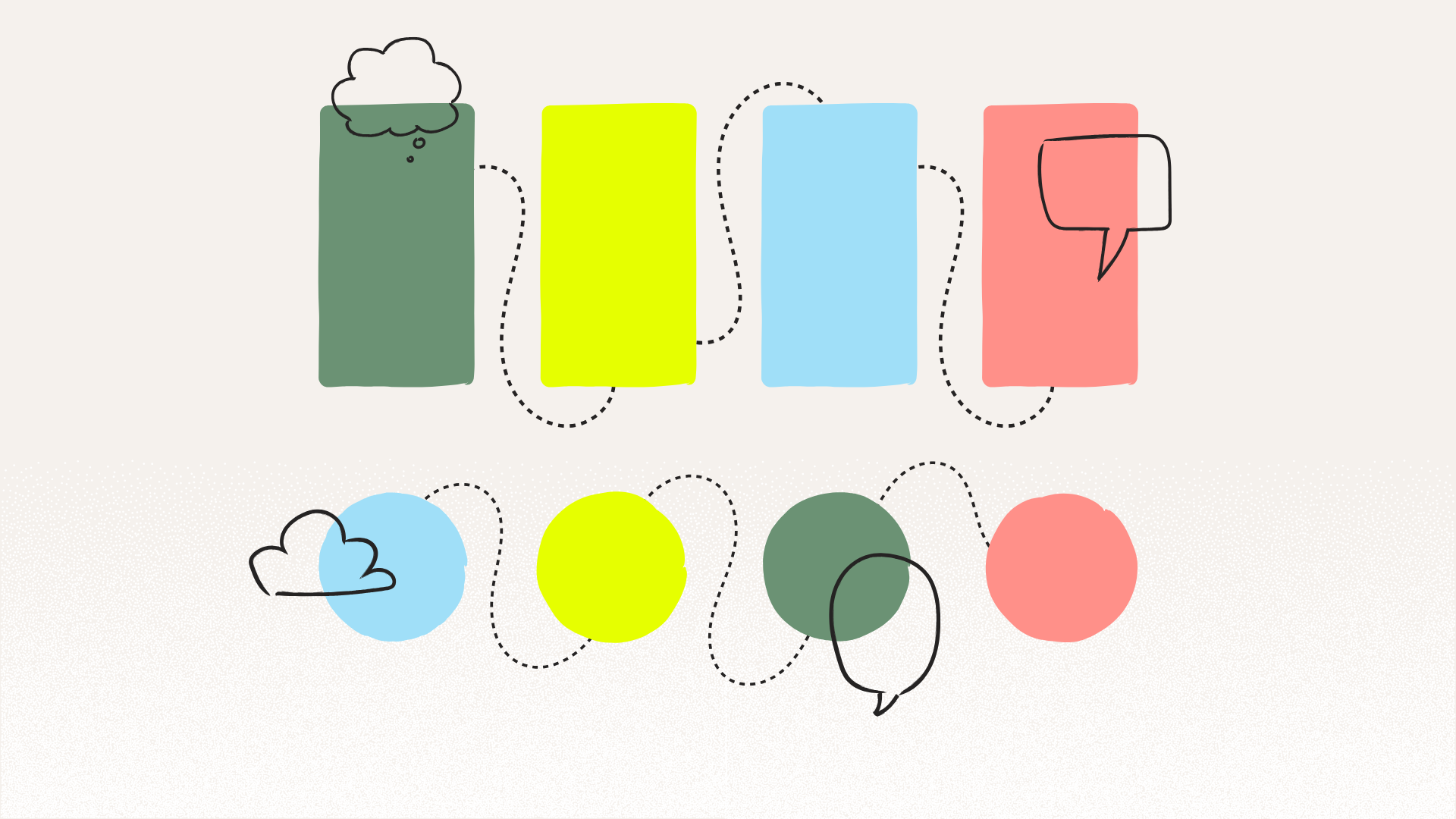Make It Make Sense
Sensemaking starts with chaos.
— Karl Weick
“Sensemaking starts with chaos,” says organizational theorist Karl Weick. I love that line—not only because it’s snappy and fun to say but also because it highlights both the banality and the profundity of how we make sense of the world every day.
We encounter the chaotic, the confusing, and the unexpected with striking regularity. Often, we take a beat, and we’re able to reassess and make sense of the information or situation. Other times, though, we get stuck—the information or situation that presents itself is inscrutable using the tools we have to work with.
By and large, we have a pretty high tolerance for chaos. We accept that there’s a vast array of information and experience that we’ll never fully understand. For whatever reason, making sense of that chaos is a low priority for us; it lacks relevance or even intrigue. However, there is still plenty of chaos—plenty of confusing, unexpected, or weird information—that eats at us. It piques our curiosity or provokes our frustration.
Trivial or substantial, we want to make it make sense.
So what is chaos? And why does it occur?
What is chaos?
Chaos is the condition that emerges when reality doesn’t match what we expect reality to be.
Maybe you make a great Instagram post and expect it to perform well; instead, you get crickets. Maybe you share a status update with your boss and expect them to praise the progress you’ve made; instead, they criticize the direction you’ve taken. Or, maybe you go through an exhaustive interview process to find your next great team member and expect the candidate you choose will be a perfect fit; instead, they’re a nightmare to work with.
And of course, sometimes our expectations are negative, and the results are surprisingly positive.
That disconnect between expectation and reality is chaos. It’s frustrating. Chaos can induce anxiety or cause your confidence to falter. At the least, it’s like an itch you can’t quite scratch or a tickle in your throat that no amount of coughing will relieve.
When our expectations don’t match reality, that’s a sign that we’re working with the wrong mental model. That’s not to say that everything in the world can be explained given the correct framework, but that what often appears to be incoherent, inconsistent, or unexplainable makes sense when we investigate it from a different angle. Further, what makes sense isn’t good, right, or just—“making sense” isn’t morally normative. Instead, adopting a new mental model and making sense of chaos is often a prerequisite for positive change.
What is a mental model?
A mental model is an understanding of how things work. It may be a narrative, a shortcut, a framework, a theory, or any other kind of cognitive tool we use to process information and generate predictions.
For example, that great Instagram post you made? The one that got crickets? The reason you thought it would perform well is that similar posts have performed well in the past, or others have had success with similar posts, or you responded to a concern a large portion of your audience has. Your prior experience, your observations of others’ results, and your theory of audience interest are all reasonable mental models. Often, they will yield accurate predictions, which can exacerbate the frustration of dealing with the unexpected.
In this case, you may assume that something is going on with the algorithm that limited the reach and performance of your post. That assumption is one superficial way of making sense of the situation. Saying “Ugh, the algorithm!” gives you some cognitive or emotional release—but it doesn’t help you figure out what to do differently in the future. Instead of just blaming the algorithm, you need a new mental model for how your posts and the algorithm interact.
You start to resolve the chaos by forming a hypothesis and testing it. You gather more and more information until you have a mental model that seems more reliable and useful for reaching your goals.
Or, you go and search for someone else’s explanation. They’ve done the experimentation for you. They’ve constructed a mental model you can use. You just need to integrate it into how you think.
That’s a pretty great feeling, right? Relief.
It feels like relief, even if you still don’t like the results of the new mental model. It feels like relief, even if you believe things shouldn’t work according to your new mental model. At least you can make sense of what’s happening. At least you feel more prepared, better equipped, to deal with “the way things work.”
My very safe guess is that providing this kind of relief is part of your life and work in one capacity or another. You might make sense of things for a child or partner. Maybe you help your team build a mental model you can use to achieve business goals. Maybe you’re the friend everyone knows to come to when they’re confused about a particular subject. Maybe the clients you work with bring their frustrations to you, and you offer them a fresh mental model for making sense of them.
You probably aren’t consciously aware of what you’re doing. You’re not analyzing the other person’s mental model to see where they’ve gone wrong and sharing your exact thought process with them to give them a new way of thinking. It’s second nature at this point in your life or work.
Most of the time, that is totally fine. You don’t have to be conscious of your own sensemaking process to help others.
Persuasive Communication
But let’s say you want or need to communicate with a larger audience. Let’s say you’re creating a training program, or raising funds for a candidate, or advocating for an important policy, or even engaging in some public scholarship—these are all times when it pays (sometimes literally) to bring awareness to your mental model and how it provides the relief that comes from making sense of a chaos.
Many years ago now, I took a copywriting class from Joanna Wiebe, founder of Copyhackers. Bottom line: copywriting is just a form of persuasive communication—typically to get people to do something (e.g., buy, donate, etc.). From her, I learned that the first step in figuring out what you’re going to say to intrigue and persuade someone is to ask: What do they know right now? That question was similar to the kind of pre-writing I already did, but that question unlocked a treasure trove of new information.
I always started a copywriting (or really any persuasive writing) project by asking: What do my readers do, say, think, and feel? Then, I would use the answers to inform how I tackled a subject. But doing, saying, thinking, and feeling don’t exist in a vacuum, of course. Even thinking and feeling have an epistemic context. That is, what people know (or think they know) is a sort of scaffolding that they build their actions, speech, thoughts, and emotions on top of.
That scaffolding? That’s a mental model. I need to know how and why my reader does, says, thinks, and feels the way they do to connect with them. I need to know it to show them the flaws in their approach—why their actions, speech, and thoughts aren’t producing the scenario they expect. And I need to know it so that I can contrast the model I’m advocating for against their existing model.
Too often, communication doesn’t land because it tries to perch a new mental model on top of the rickety scaffolding that is producing the chaos wreaking havoc on our understanding. This communication doesn’t acknowledge the existing framework that people are using or the feelings it produces. Persuasive, sticky, and relieving communication begins by acknowledging chaos and showing how it emerges.
For example, Minnesota Governor Tim Walz became an overnight sensation when he dubbed Republicans’ behavior as “weird.” That one word both acknowledged the chaos many people felt and, at the risk of exaggerating just slightly, supplied a new way to make sense of it. Walz keyed in on something seemingly obvious but causing chaos nonetheless: Republicans were saying weird stuff and doing weird things. Our existing mental models—that these are intelligent, moral, serious people—were trying to justify this behavior and coming up woefully short. That’s chaos.
When Walz said, ‘Hey, that’s weird,’ he sent a wave of relief out over the airwaves. His statement was a permission slip to stop trying to fit the weirdness into an existing model of normalcy and start making sense of it simply through the lens of “weird.” Yes, it was funny. Yes, it felt delightfully juvenile. But it was also a mental model that made sense. It relieved the chaos, if only for a short time.
Making sense of chaos feels good—which means it’s possible to exploit the process. Savvy marketers, cunning thought leaders, and shrewd politicians earn their (often lucrative) livelihoods on this kind of pithy sensemaking. Pundits of all stripes build whole careers on peddling new mental models in the form of sound bites.
Offering new mental models—new ways to make sense of a confusing world—is a powerful tool. And just because it can be used for nefarious purposes doesn’t mean we shouldn’t use it to communicate our meaningful ideas and make remarkable media. I believe that we must.
To be transformative over the long term, making sense has to be more than sound bites or slogans. It must be a rigorous approach to deconstructing the outdated or ineffective mental models that produce chaos and reconstructing mental models that inspire us to make different choices and take action in new ways.
This is the first part in a miniseries on media and making sense. Next week, I’ll share a few of the mental models I often rely on to make sense of what would otherwise be chaos.
You’re Invited to Make Sense with Me!
In the meantime, if making sense is something you know you want to do more of for people you care about, in September, I’m hosting Making Sense—an 8-week workshop on turning meaningful ideas into remarkable media. Step by step, I’ll help you identify the ways you already make sense for your audience, team members, stakeholders, or students so that you can create articles, videos, podcasts, white papers, or social media posts that make a bigger impact.







